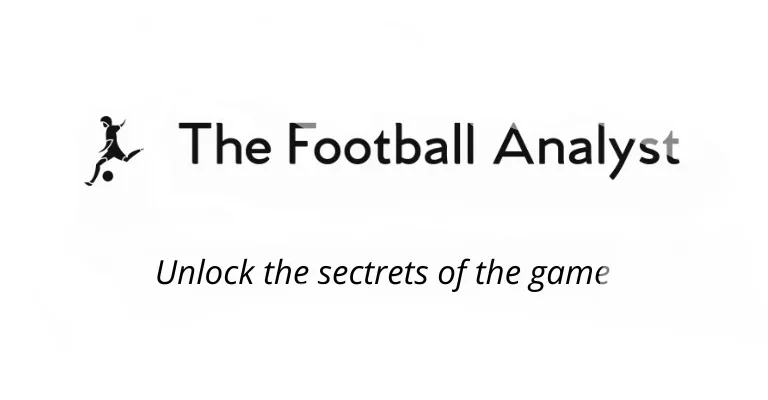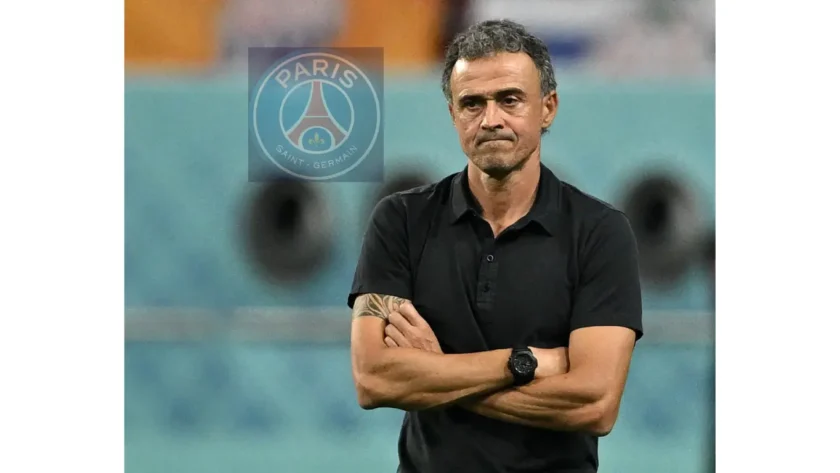Embarking on a strategic journey through the realm of football tactics, this article delves into a detailed analysis of Paris Saint-Germain (PSG) under the managerial guidance of Luis Enrique. As the maestro orchestrating PSG’s gameplay, Luis Enrique brings a wealth of tactical knowledge and strategic finesse to the forefront. From defensive formations to offensive maneuvers, we unravel how Luis Enrique tactically has sculpted PSG’s playing style. Join us as we navigate through the tactical nuances that define PSG’s approach under the astute leadership of Luis Enrique.
Build-up
1-4-2-4
At the beginning of the season, PSG mostly used a 1-4-2-4 formation:
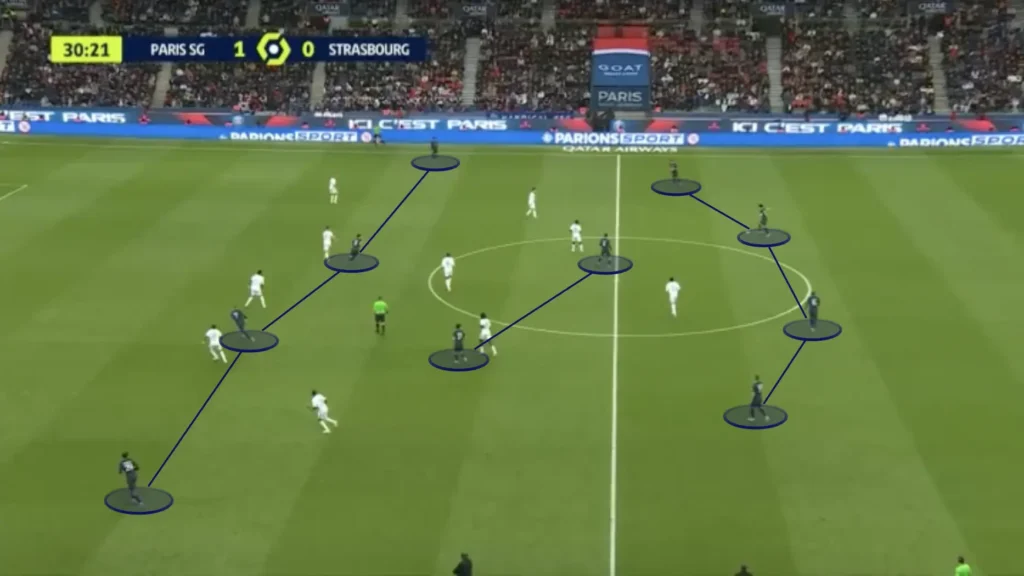
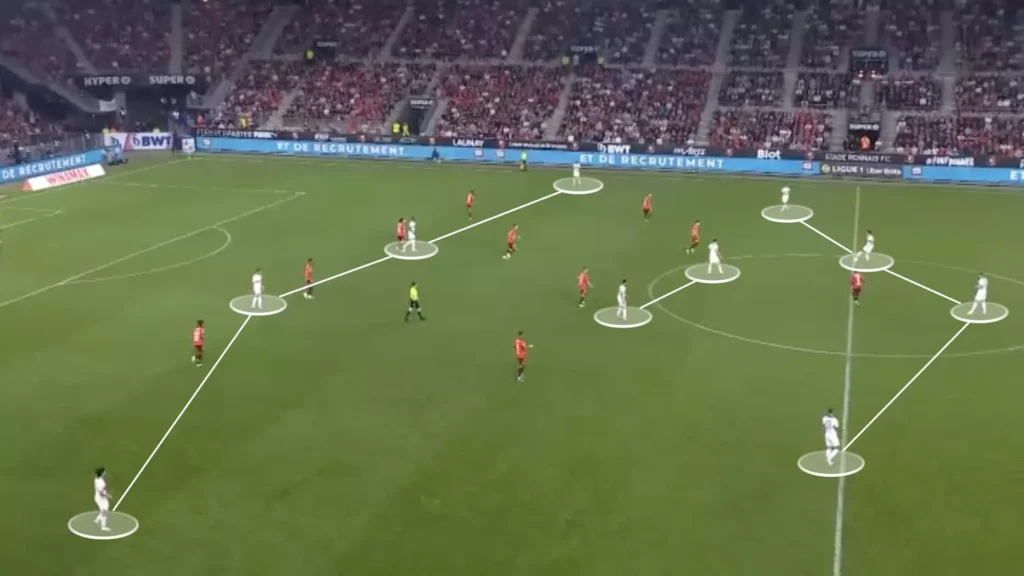
The two strikers would try to cooperate, one pinning the center-backs and one dropping to receive the ball between the lines. PSG found some success using this formation but could sometimes become too static, not moving enough to break down the opponent.
In the low build-up, they often set up in a 1-4-2-2-2 formation:
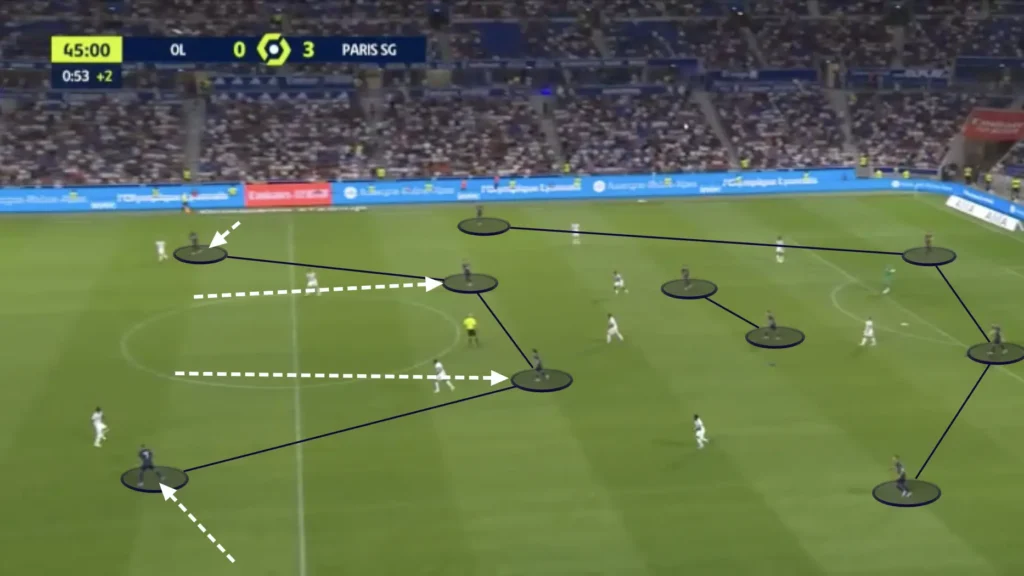
This formation, popularized by Roberto De Zerbi, questions the opposition center-backs, forcing them to make difficult decisions. If they push up on the number 10:s, the space behind them opens up, giving the winger a 1v1 against the fullback. However, If they do not push up the number 10:s, a numerical superiority gets created in the midfield, allowing PSG to play through the press.
1-4-3-3
Recently, Enrique’s PSG has set up in a 1-4-3-3 formation:
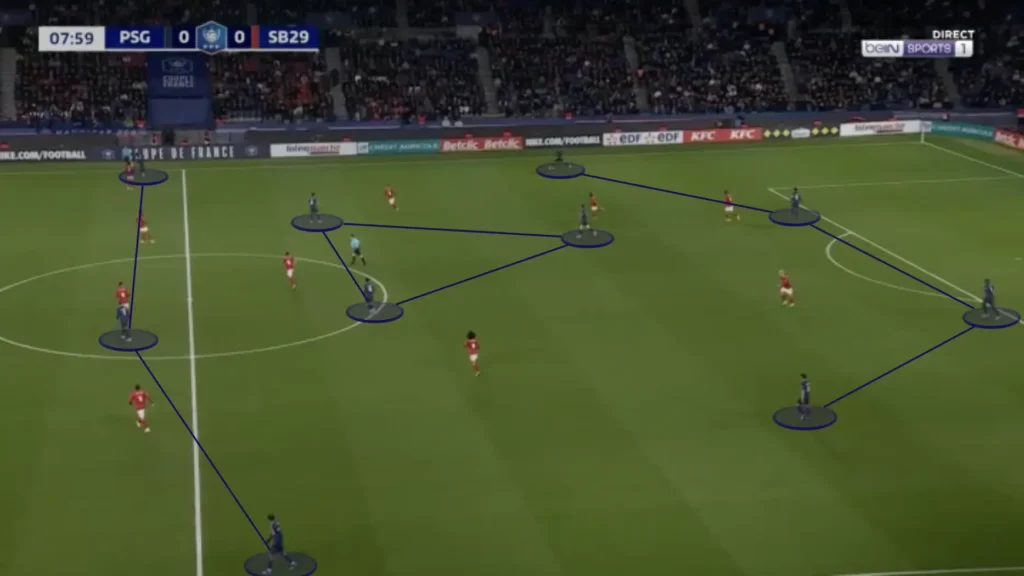
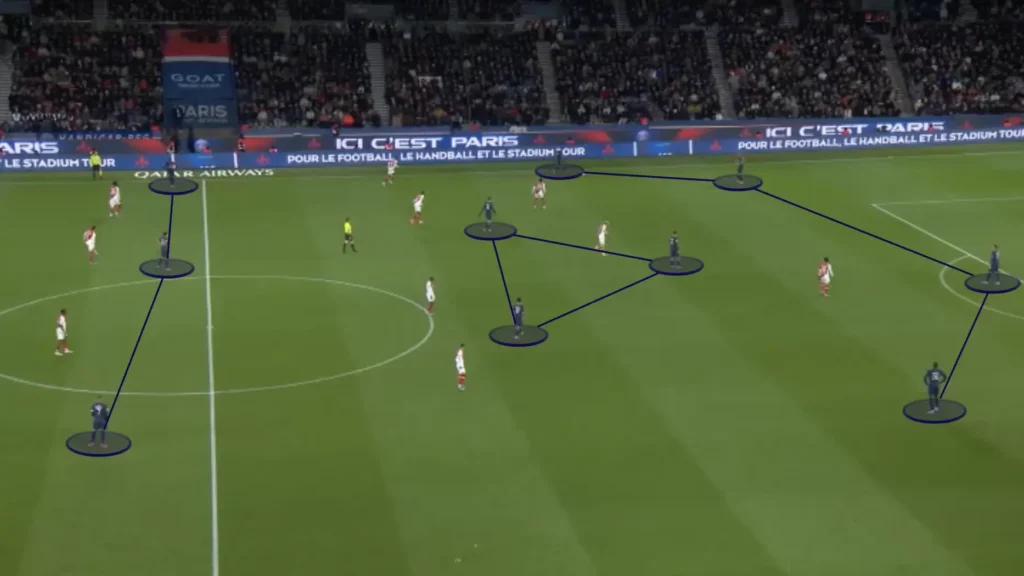
This change has given PSG more players lower down the pitch, allowing them to play through the opposition easier. The extra midfielder also gives them better counter-pressing conditions.
Inverted Fullbacks
Regardless of the formation, the PSG fullbacks invert during the build-up, creating more options in the center and less space between the players. Enrique likes this because he prioritizes playing through the middle, thus creating numerical advantages in the midfield areas. This builds good conditions in defensive transitions, allowing more players to press when they lose the ball. Another purpose for keeping most of the players central is that it lessens tween them the distance. This shortens the length of the passes, which naturally shortens the time between passes. This means the opposition players will have less time to push up and press, giving the PSG players more time and control.
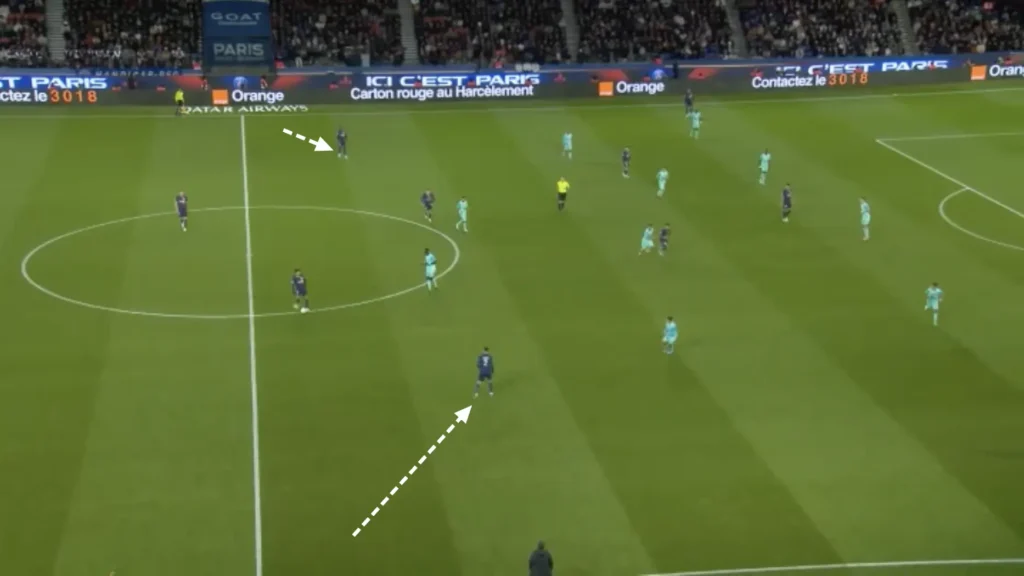
A recurring pattern in PSG’s high build-up is that the ball-side fullback inverts to open the passing lane from the center-back to the winger. When the fullback inverts, the opposition winger follows and covers the run. This allows the center-back to pass the ball to the winger, who can attack the opposition fullback in a 1v1 duel. The inverted fullback’s now central position also allows him to help the winger, offering a one-two or performing an underlapping run.
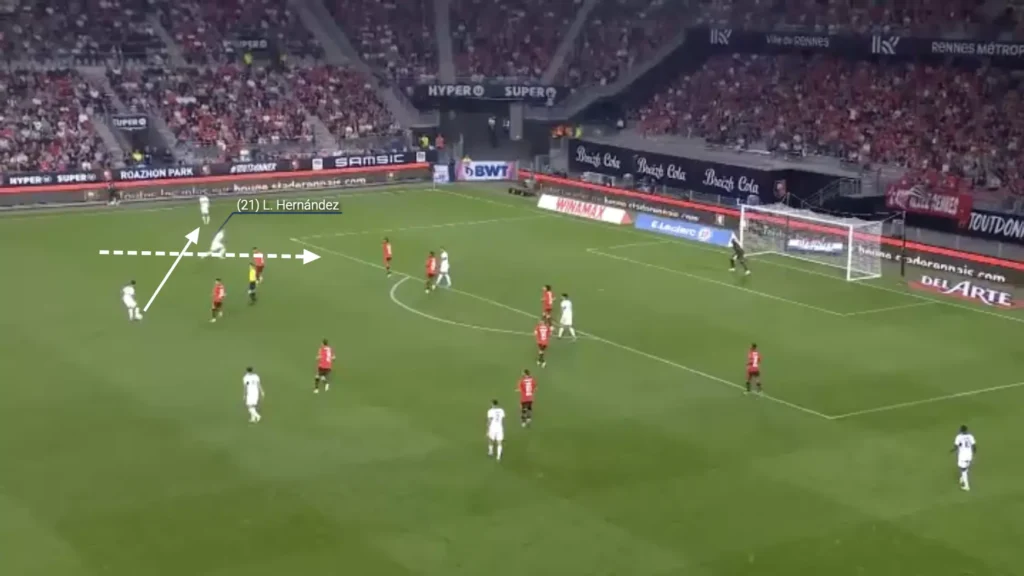
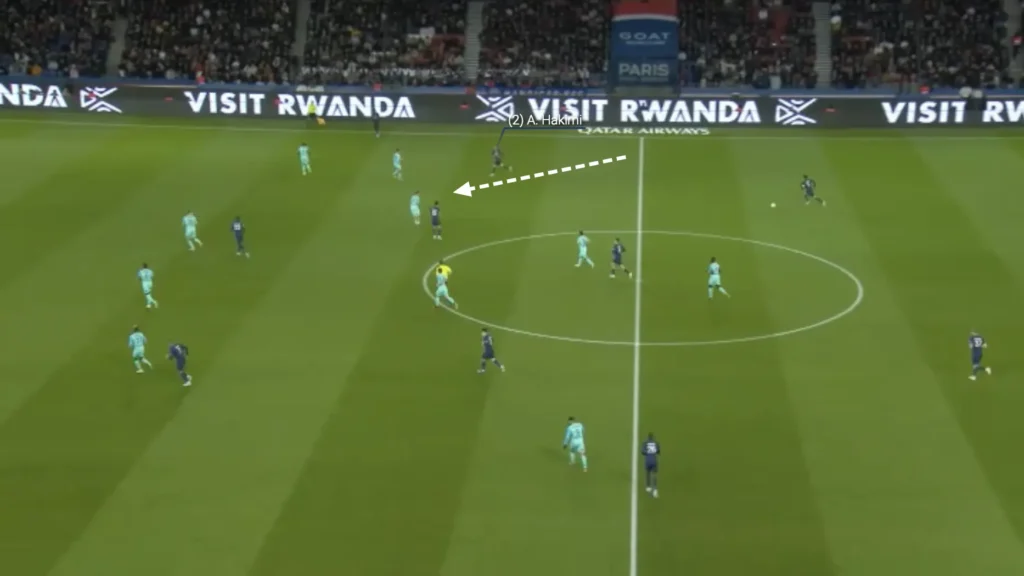
Attacking the Half-Space
PSG is an excellent team in the final third. They always create many chances, mainly by attacking the space between the opposition center-back and fullback.
They do this both from the wide areas with underlaps from midfielders:
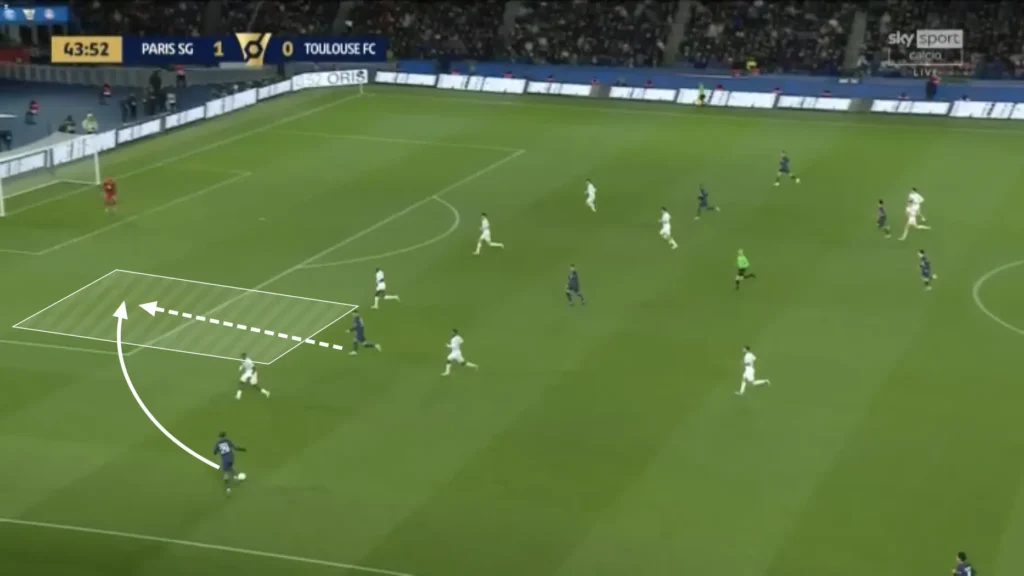
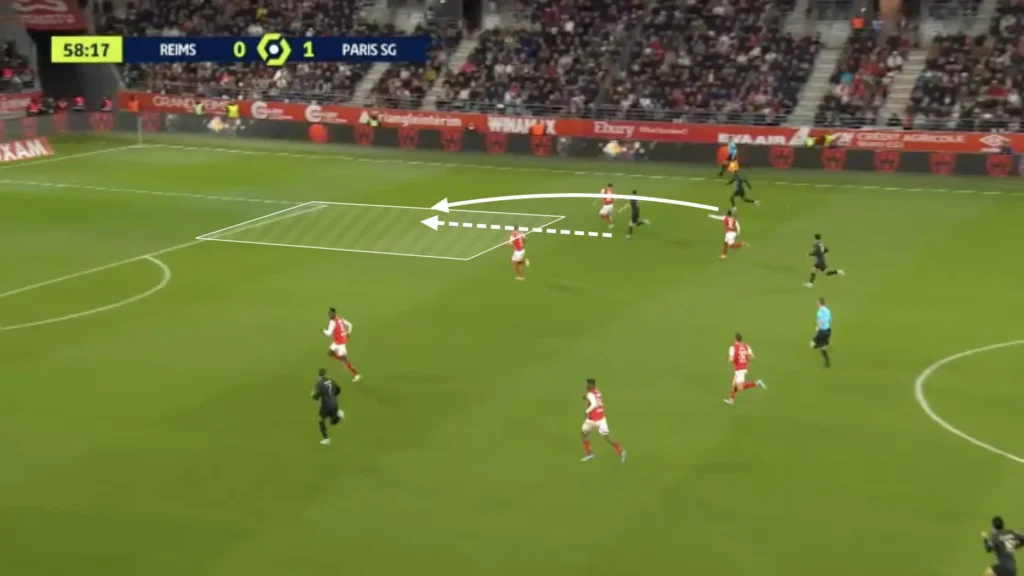
And from midfield runs and passes from the center:
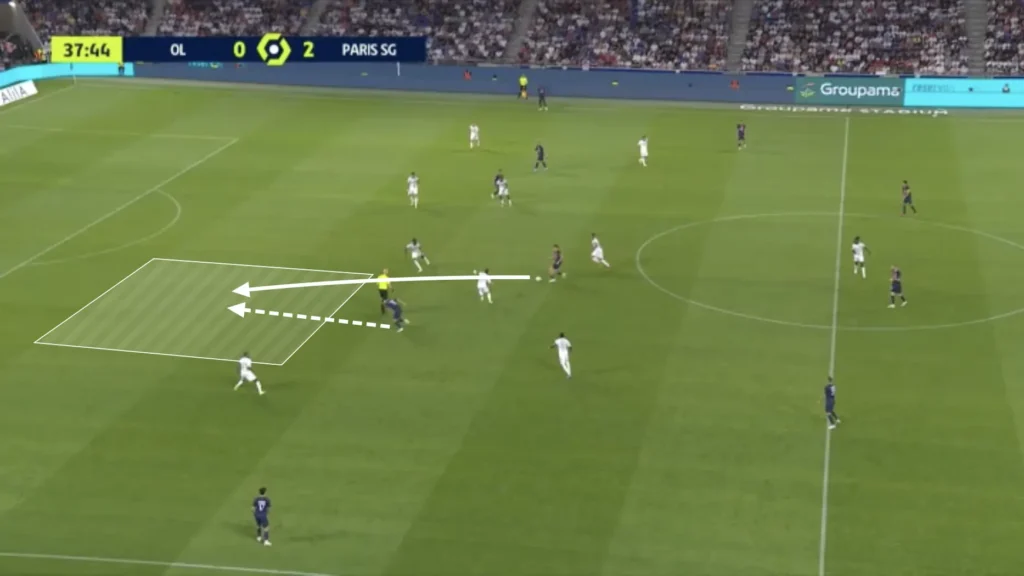
The underlapping runs often come from the inverted fullbacks. These runs are hard to defend because the winger is usually responsible for the fullback. It becomes unnatural for the winger to track the run between the center-back and the fullback, often leaving the PSG fullbacks open when making the underlap.
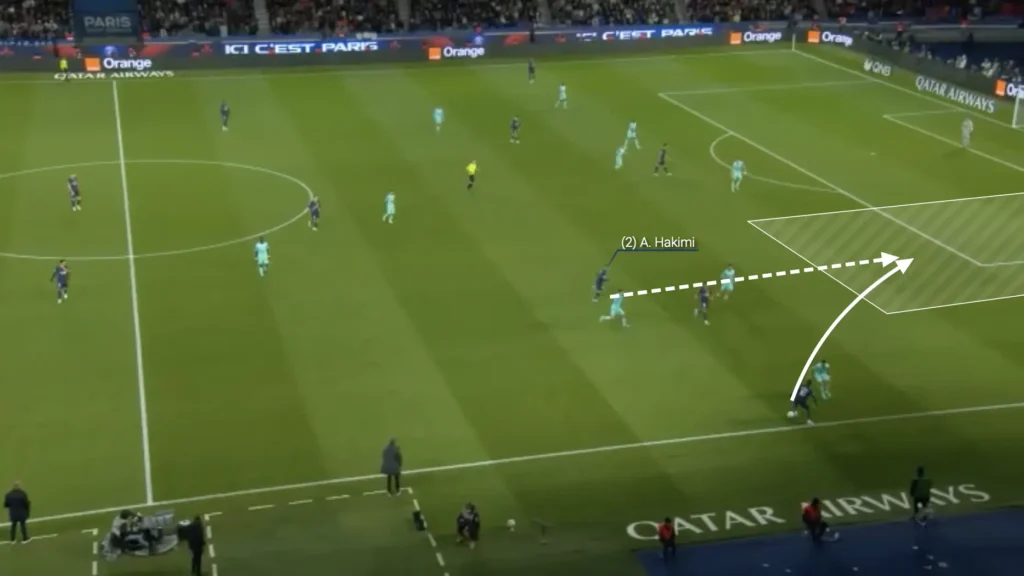
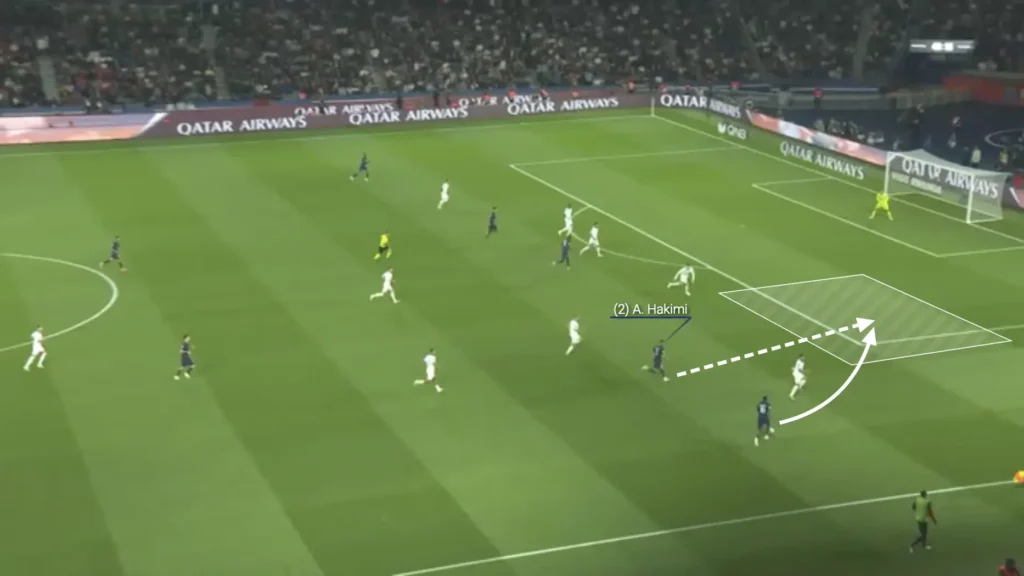
Many Players in the Box
The attacking midfielders also look to make runs into the box when the ball is in the final third, often getting four or five players into these areas to create overloads. The numerical advantages in the box force the defending team to make decisions and leave some players open. The open player can receive a cross or a pass and get a great goalscoring opportunity.
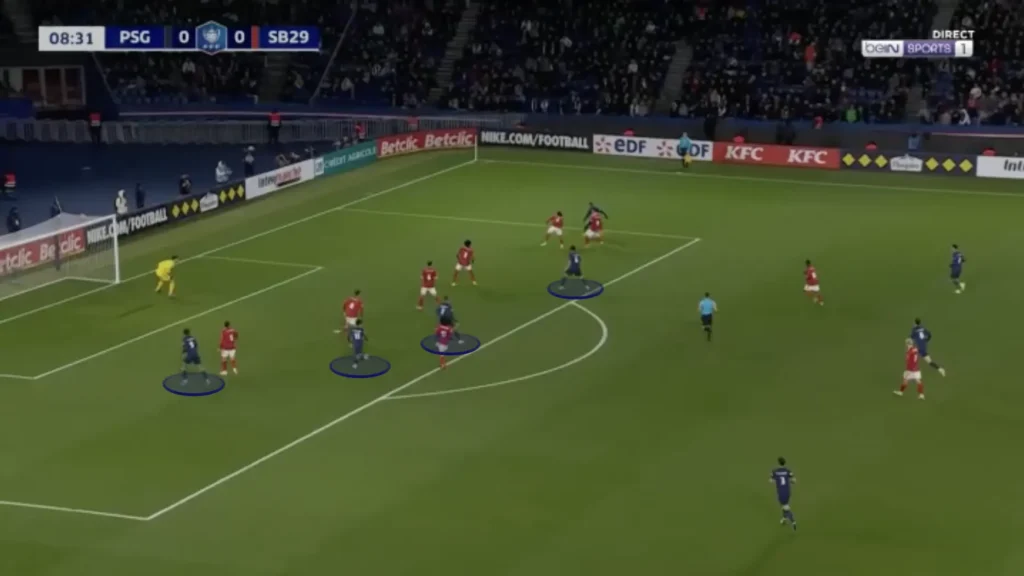
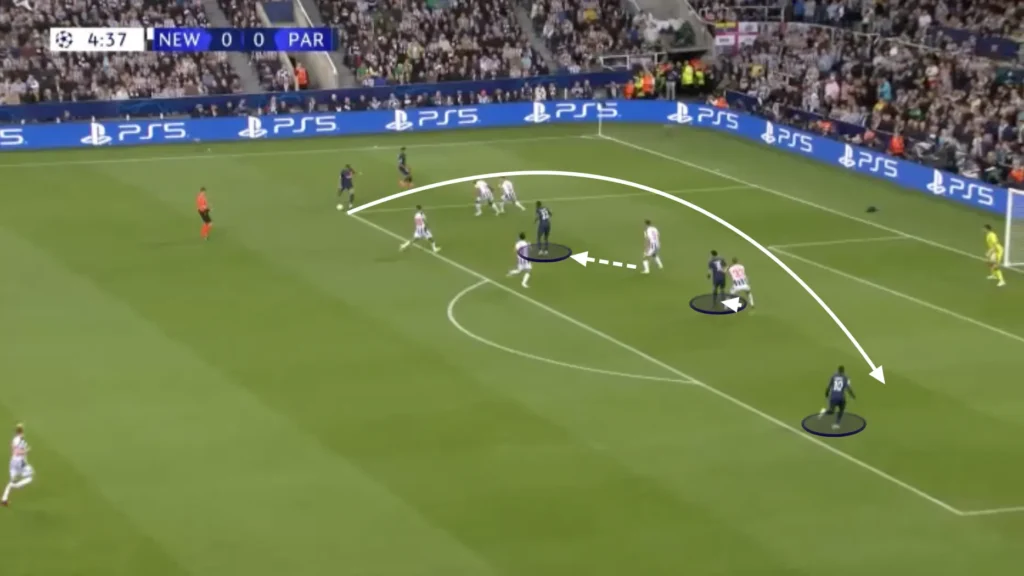
As established, the PSG fullbacks invert in the build-up, giving PSG numerical advantages in the center. They may also continue their runs into the box, creating the overloads there. This causes even more problems for the defenders, allowing more PSG players to open in crossing situations.
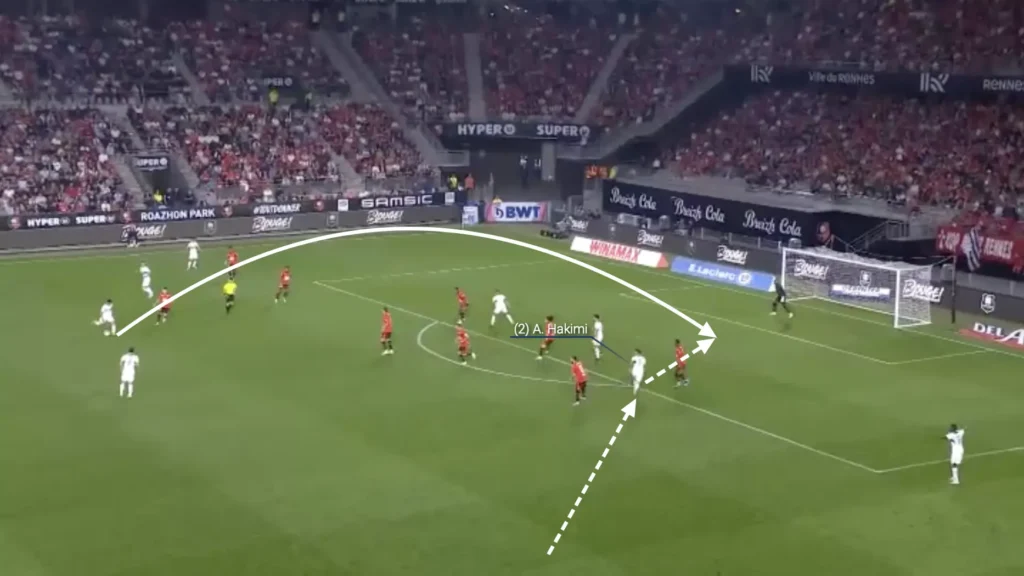
Controlling the Game
A crucial principle in Enrique’s game plan is to control the game’s tempo. PSG often change the tempo with a few quick passes to beat lines after having the ball for a long time.
One tool that helps control the game is for the center-backs to stand still with the ball:
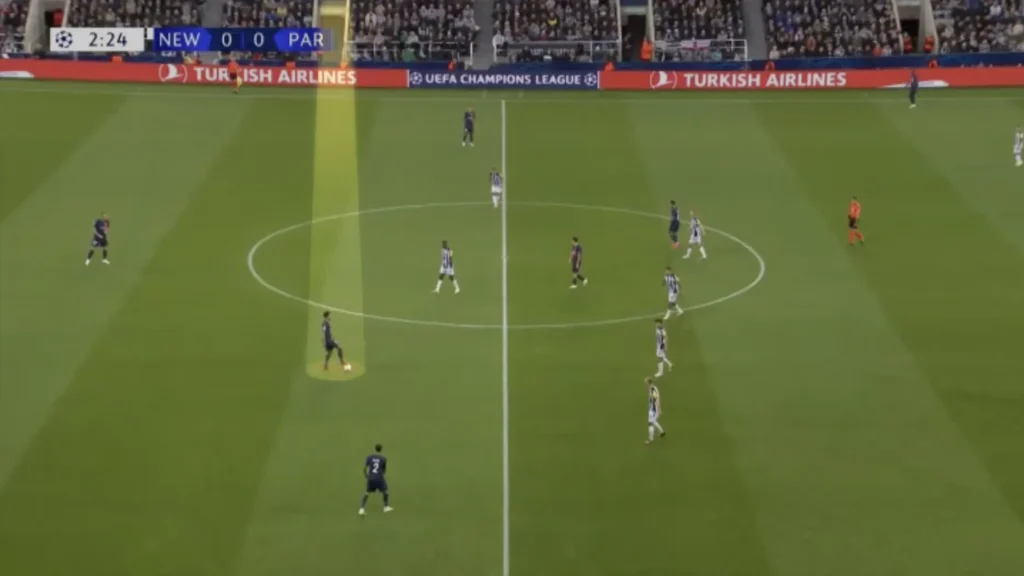
They do this for two reasons:
1.) It enables the center-back to play the ball to either side
2.) It lures the press while still having control of the ball
Defending
Low Press
In the low press, PSG sets up in a 1-4-1-4-1 formation. They often set up in a mid-block, always trying to push up and press the opposition.
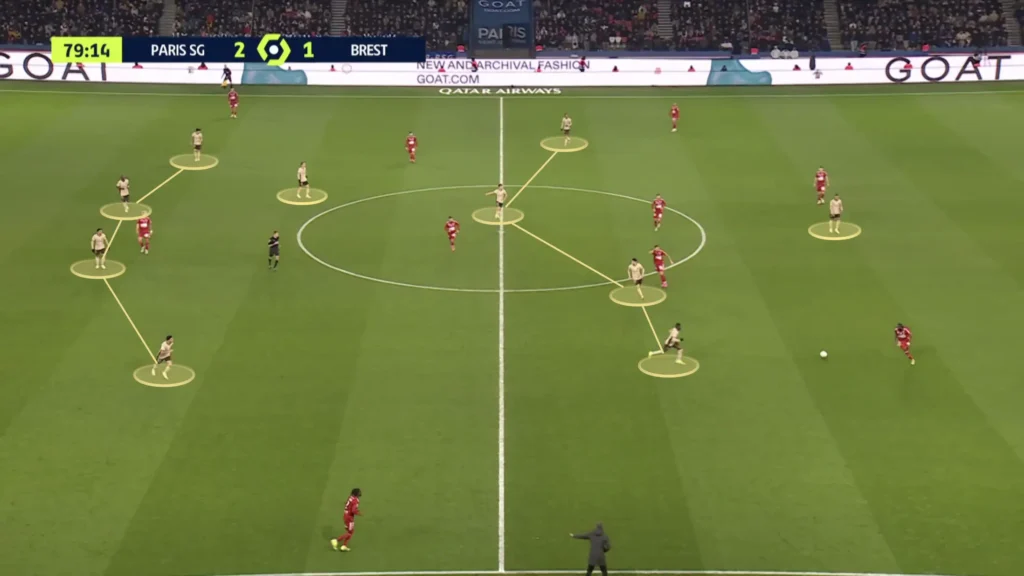
High Press
Luis Enrique places much value in being aggressive without the ball. This shows in PSG’s high pressure. Enrique usually wants his team to go man-to-man and intensely press the opposition. They do this because of their principle of being the team controlling the tempo, therefore always looking to have possession.
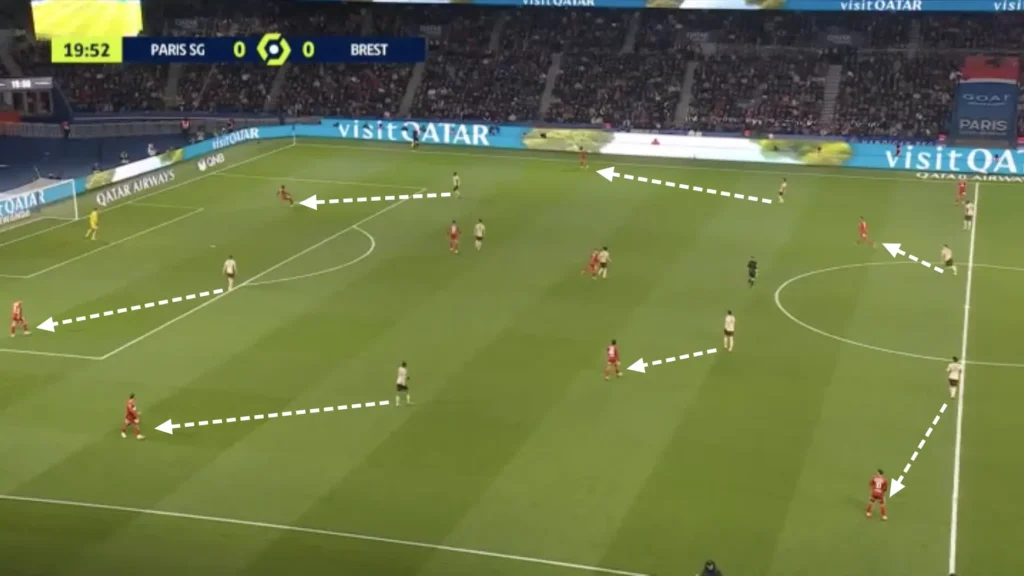
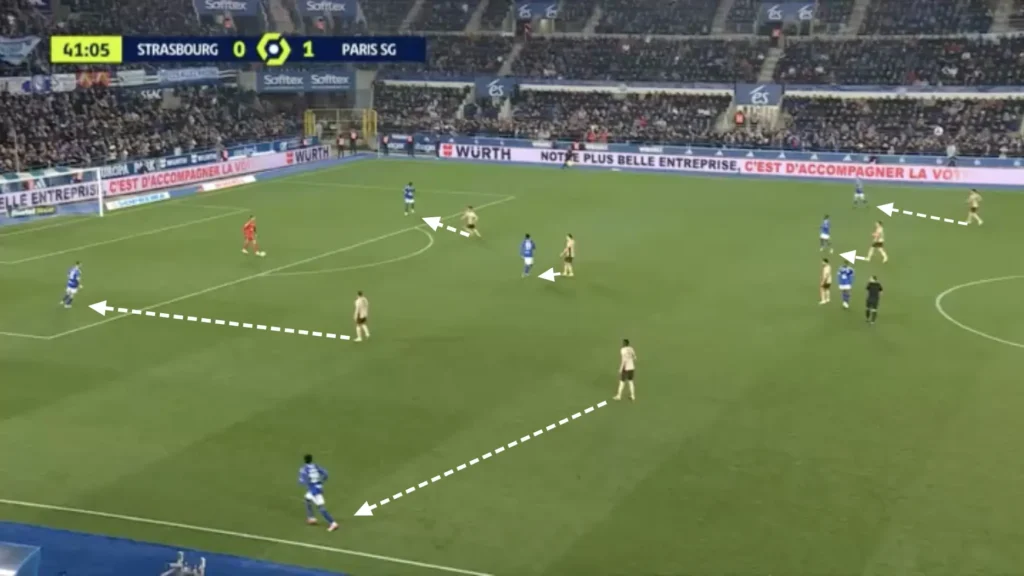
Transitions
Defensive Transitions
Positioning many players centrally, creating a numerical advantage in the midfield, creates good conditions in defensive transitions. Many players close to the ball after losing possession means that many players can work towards regaining possession. PSG, therefore, often succeeds in regaining possession directly after losing it.
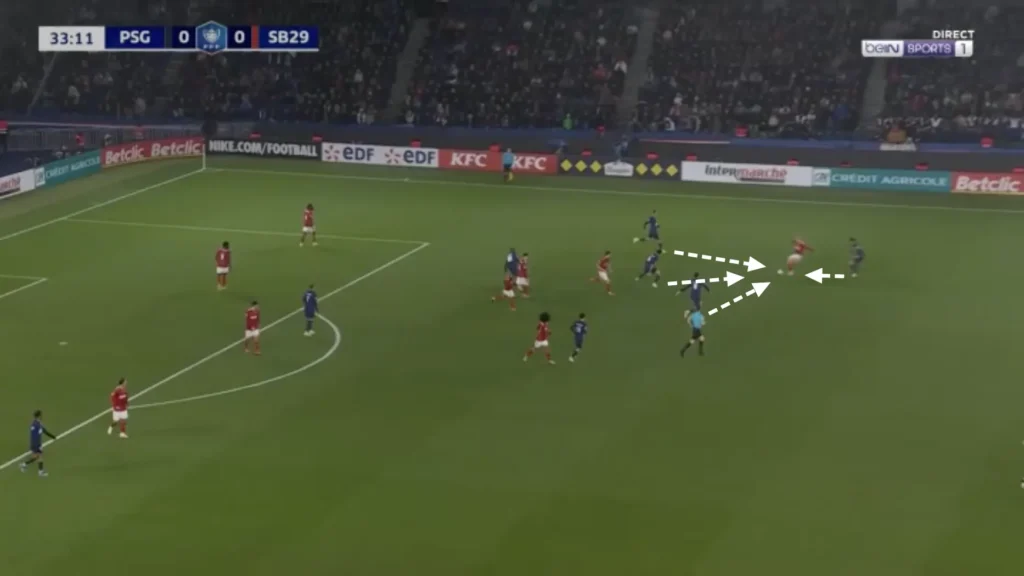
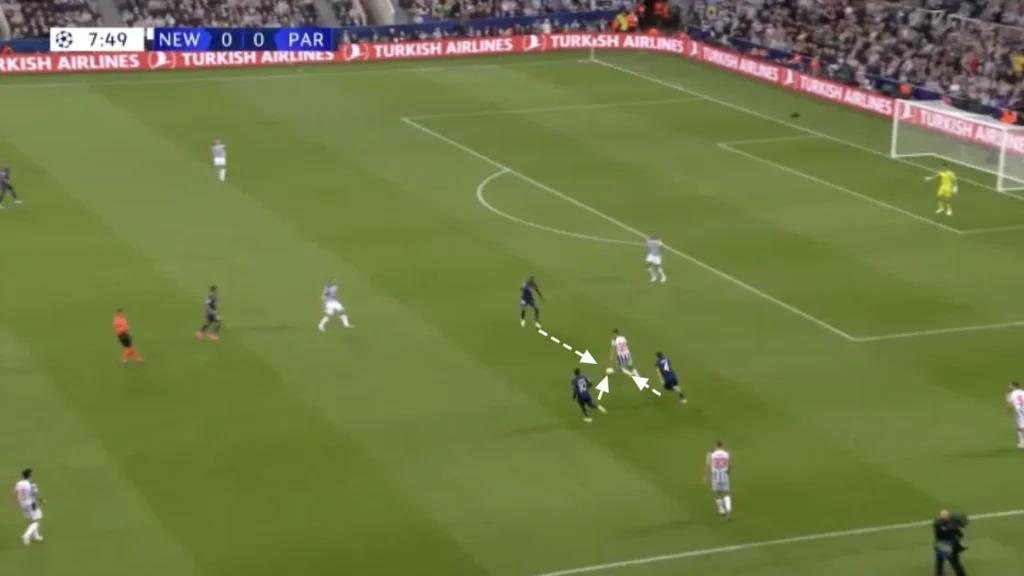
Offensive Transitions
Enrique also wants his team to counterattack in their offensive transitions. They do this with a high tempo, often attacking the spaces between the center-backs and fullbacks. PSG’s fast forwards have their greatest strengths in attacking the defense with speed, and they, therefore, score many goals from counterattacks.
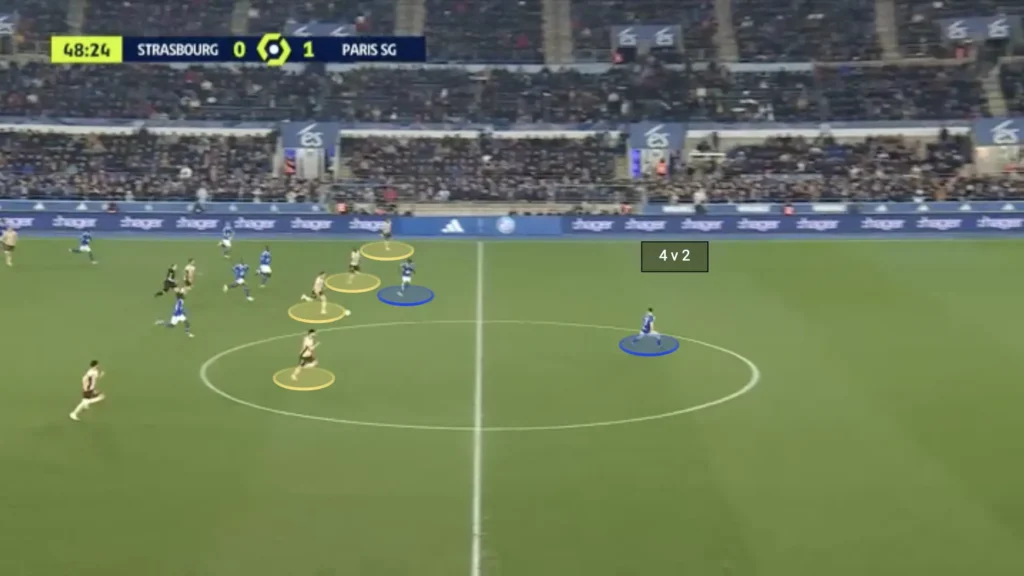
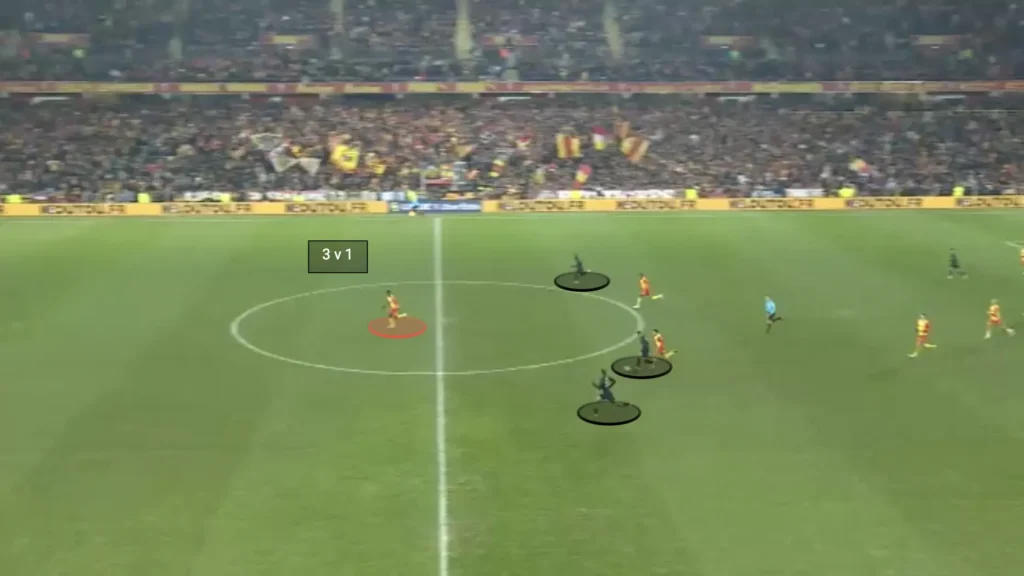
Final Thoughts
In conclusion, this tactical analysis of PSG under the guidance of Luis Enrique highlights the intricate strategies and dynamic gameplay employed by the team. From their organized build-up play to their high-pressing defensive tactics, PSG under Luis Enrique has showcased a versatile and proactive style of football. Implementing various formations and player movements has allowed PSG to adapt to different opponents and situations on the field, resulting in impressive performances and notable victories. As Luis Enrique continues to leave his mark on the team, PSG fans can expect further evolution and refinement of their tactical approach, promising exciting times ahead for the club.
